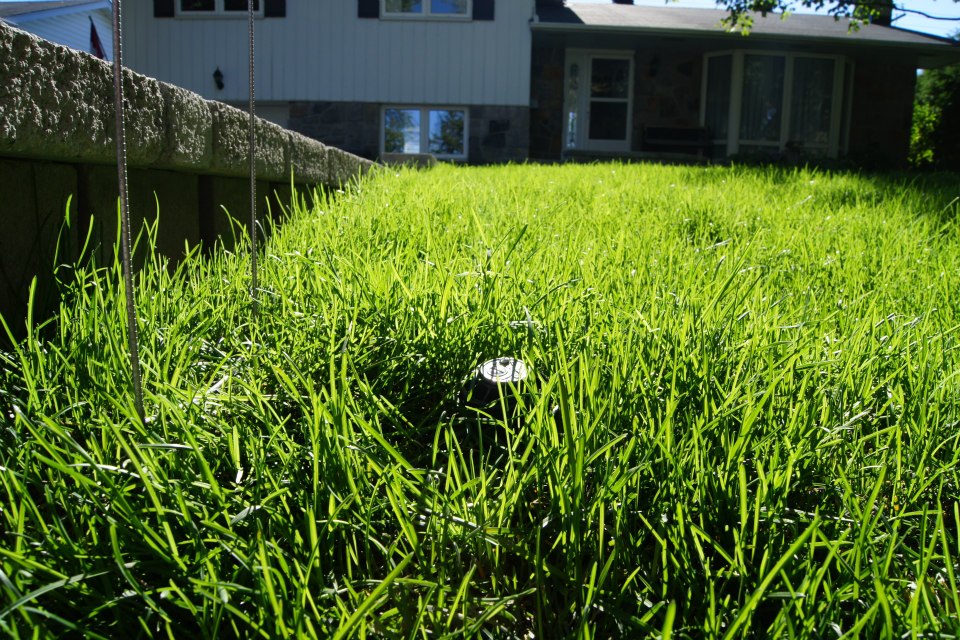NEW SOD Care – Everything you need to know to take care of that SOD
 You just had your fresh new SOD installed, and your lawn has never looked better! No weeds and a full beautiful lushes green. But now what? If you were planning on Mother Nature to give your new lawn everything it needs you will quickly find yourself in some serious trouble. Without proper SOD care, your new lawn will quickly show it is unhappy! Wait too long, and your SOD will not be able to recover.
You just had your fresh new SOD installed, and your lawn has never looked better! No weeds and a full beautiful lushes green. But now what? If you were planning on Mother Nature to give your new lawn everything it needs you will quickly find yourself in some serious trouble. Without proper SOD care, your new lawn will quickly show it is unhappy! Wait too long, and your SOD will not be able to recover.
So how do you take care of new SOD? Well for the next few weeks and even the following year, you are going to have to treat your lawn like a new child; giving your SOD extra TLC until it find its footings.
SOD care Cheat Sheet
| Period | Watering | Mowing | Weeding | Fertilize/Topdress | Nematodes | Other practices |
| 0-7 days | 3x a day | No | No | No | No | Avoid walking on lawn |
| 8-13 days | once a day | No | No | No | No | Avoid walking on lawn |
| 14-21 days | 3x a week | Cut highest setting | Before mowing | No | No | No |
| 22+ days | 2x – 3x a week | Cut highest setting | Before mowing | Day 30 –Apply Fertilizer | First application | No |
| Regular Maintenance (Yearly) | 2x – 3x a week | Cut | Before mowing | up to 4x a year | 3x a year | Aerate 1-2x a year Dethatch end of April/early May |
| Notes | Water must be reaching the soil under the sod. | Do not cut the grass when it is wet. Remove all clippings. | Manually pull out weeds you see before they spread | Apply 1/8″-1/4″ of topdressing soil. Grass & seed where needed. Shadier may need also shade mix grass seed. | Dethatching is especially important for the first few years of new sod. |
Important Watering Tips:
- Do not water late in the evenings or at night. New sod is more vulnerable to diseases, being wet for long periods of time can encourage this
- Edges and corners between sod rolls along with grass beside pavement are more susceptible to drying out. You will want to focus more watering attention here.
- If Sod comes out of place, move it back and give it extra water
- Always make sure water is penetrating the soil underneath the sod. If there is run off and it still hasn’t reached the soil, wait for 15-30mins then resume watering.
- Do not let your sprinkler run on low all day as this could leave to overwatering the sod and under watering the topsoil.
First 7 Days
If you want to give the new SOD a chance, you are going to have to make sure your SOD and soil is not dry to long this week. Depending on the time of year and what climate you are in, you may have to water it A LOT. Living in Ottawa, we recommend at least 3 times a day; once in the morning, once in the afternoon and once early evening. If it is hotter or the area has high drainage (like on a hill) you may have to do more.
When watering, you will need to be sure the area is getting completely soaked. Poke a spike or screw driver into the new soil to ensure that you are watering enough. The water needs to reach the soil underneath the sod. If the water is not penetrating down enough, you will start to see large gaps between the rolls of sod; this means your sod is starting to shrink. The first sign of shrinkage is the edges or the rolls will start to turn yellow.
Watering SOD can be a little tricky since it is possible to over water. That is Green Works Contracting says to give the SOD a good soak rather than a constant light sprinkler shower. This way, you ensure that the water is actually penetrating into the topsoil. As the SOD dries out from the summer heat, the topsoil will maintain its moisture. The SOD’s rooting system will seek out the moisture, germinating deeper into the soil to get the water. If the sod is getting to much water, it will actually prevent the roots from developing into the soil. We call this spoiling as the sod has no drive to create a deep root system since it is getting everything it needs where it is! Your sod is basically becoming a lazy 20 year old living at their parents’ house with no job, watching TV all day and eating all the food in the fridge.
You are also going to want to minimize foot traffic while the new root system is establishing.
7- 13 days
The root system should be starting to establish itself now. Gentle pull back a corner of the sod in several places to check. The lawn could be difficult to pull up so do not force it. You can cut your watering back to once a day in the morning. Again, it is important to make sure the water is hitting the soil underneath the rolls of sod.
If you lawn comes up fairly easy, it could mean a few different things. If it is still a nice lushes green, it could mean it is being over watered and is being spoilt. If parts are yellowing, it could mean you are under watering or the SOD has been laid in a very shaded area and will need special attention. It is important during this time to give us a call if the sod is not properly rooting. We can help diagnose what is happening and offer solutions.
14-21 days
Assuming your sod is well rooted, you will be able to reduce your watering to every other day. At this point, it is also safe to mow the lawn. Before mowing, take a walk along your lawn to pull up any weeds. Set your blade to the highest-setting available. Do not cut more than one third of the grass when mowing, for example if your grass is 4” do not cut lower than 2.8”. During this period, you will want to keep your lawn at around 2 ½”-3”. Make sure to remove all yard clippings; do not leave any clumps on your lawn. This will block out the sun and create thatch, making it harder for new sod to grow.
Regular Monthly Maintenance
Your lawn should be fairly established at this point, so it will be able to handle normal wear and tear. You can water your lawn 2-3 times a week, depending on the weather. You will still want to make sure you are applying enough water.
If you notice areas that are patchy, you may want to topdress, fertilize and seed. Be sure to only add 1/8” – ¼” per topdressing application or you may block out to much of the sun and smoother your grass.
Want to keep your lawn grub free? Apply nematodes 3 times a year to kill off any new grubs. These are a natural species that only attack harmful soil-dwelling insects. Learn more here!
Yearly Maintenance
The first winter might be especially hard on your lawn. It is common to see some yellowing and burn. If you kept up with your watering when it was first installed, your lawn will bounce back in no time! At this point you will want to walk along your lawn pulling up any weeds you see. If your lawn is particularly yellow with a lot of dead grass, you may also need to dethatch, aerate, topdress, seed and fertilize. The first few winters is hard on new sod and it may not thrive if you neglect it. Be sure to keep up with your yearly maintenance to keep it healthy! Read the full yearly maintenance plan here.
It is very important to monitor your lawn for the first few weeks to make sure it is getting the proper care. If you notice anything unusual going on, or have any concerns about SOD care give us a call! It is easier to fix the problem sooner than later.
